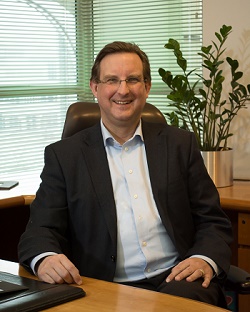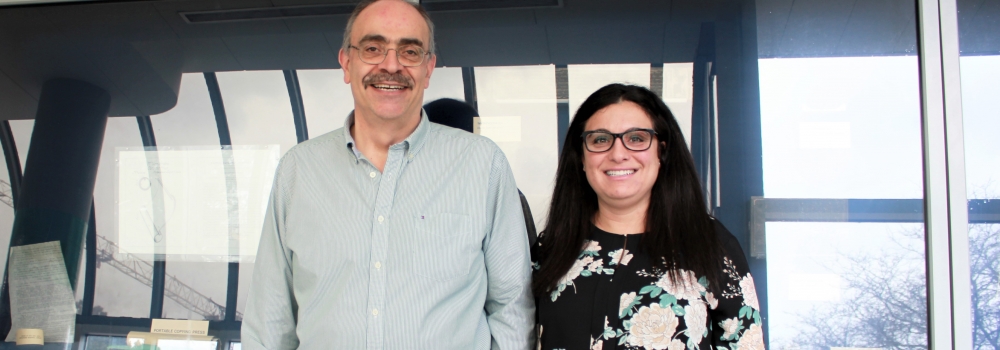By Dr. Paul Smith

The Xerox Research Centre of Canada (XRCC) has achieved an innovation milestone with our 2,500th U.S. patent, entitled Silver Nanoparticle-Sulfonated Polyester Composite Powders and Methods of Making the Same.
The patent was invented by senior research scientists Valerie Farrugia and Barkev Keoshkerian. (Photo above.) The process uses an environmentally-friendly approach to create silver-polymeric nanoparticles that can be built up for use in 3D printing. Most powders of this type are ground from a larger size, but through aggregation and coalescence, the particle’s size, shape and structure can be controlled more precisely.
Applications that can benefit from these composite powders include a wide range of antibacterial applications for customizable medical devices, textiles, smart coatings, kitchen tools, toys and countless household items.
This achievement marks a significant moment for the XRCC, and reinforces our global leadership in advanced materials research and development.
Push the boundaries of materials innovation
Established in the Toronto suburb of Mississauga, Ontario, in 1974, the XRCC has Xerox’ global mandate for materials innovations. After 44 years, this laboratory continues to help push the boundaries of advanced materials science in Canada. Beyond the work to advance our own technologies and help our clients solve their business challenges, the XRCC actively helps Canadian start-ups commercialize their ideas.
Xerox innovation in Canada
The Xerox Research Centre of Canada (XRCC) is one reason why Innovation Leader magazine named Toronto the 8th most influential city for corporate innovation in North America.
The Canadian Campus for Advanced Materials Manufacturing is a collaboration between the XRCC and the National Research Council of Canada that seeks to accelerate the commercialization of advanced materials research outcomes.
To that end, the XRCC team established an Innovation Hub that enables startups to use their seed funding to develop technologies, rather than spending it on capital expenses. We offer our expertise and infrastructure to these external clients on a fee- for-service basis, and we have formed partnerships with like-minded organizations that have co-located at the XRCC to support Canada’s start-up community.
That’s why we’re an active participant in Ontario Advanced Manufacturing Supercluster, now known as Next Generation Manufacturing (NGM) Canada.
Research at Xerox
The best way to predict the future is to invent it. Here’s where Xerox invents the future
The Xerox Research Centre of Canada (XRCC) is our specialty materials research center. XRCC combines chemistry, physics and engineering to enable the flow of materials from concept through to product.
Palo Alto Research Center (PARC) is a wholly-owned Xerox subsidiary, and an integral part of our strategy for long-term research investment.
The Gil Hatch Center for Innovation in Webster, N.Y., is the world’s largest digital print showcase in the world. It showcases more than 100,000 square feet of innovation in action.
Future prosperity for Canada – and Xerox — requires a strong foundation for supporting materials innovation and commercialization initiatives. For Canada, this includes an eco-system that helps Canadian small businesses succeed. For Xerox, it’s working with reliable partners who help us achieve material progress — such as 2,500 U.S. patents, and counting.



